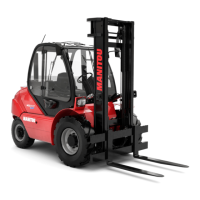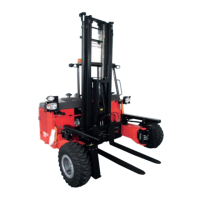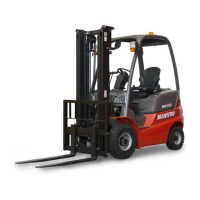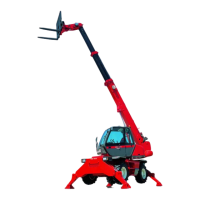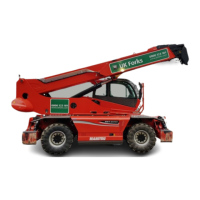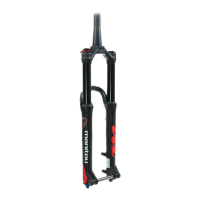3 - 20
D5 - CHANGE THE HYDRAULIC RETURN OIL FILTER
CARTRIDGE
D6 - CHANGE THE OIL TANK BREATHER
Thoroughly clean the outside of the filter and its surroundings before any
intervention in order to prevent any risk of polluting the hydraulic circuit.
- Lift up the overhead guard or the cabin (See chapter : INSTRUMENTS AND
CONTROLS in paragraph : 2 - DESCRIPTION).
- Unscrew the cover.
- Remove the hydraulic return oil filter cartridge 1 (Fig. D5) and replace it by a
new one.
-
Disassemble the cover 2 (Fig. D5) and change the oil tank breather 3
(Fig. D5).
- Ensure that the cartridge and the breather are correctly positioned and refit
the covers.
D7 - CH E C K TH E D E N S I T Y O F T H E B AT T E R Y
ELECTROLYTE
The electrolyte density varies depending on the temperature concerned, but a
minimum of 1260 at 16° C must be maintained.
In the shaded area (Fig. D7), the battery is in a normal charge condition.
Readings above this zone indicate that the battery needs to be recharged.
The density should not vary more than 0.025 units between cells.
- Lift up the overhead guard or the cabin (See chapter : INSTRUMENTS AND
CONTROLS in paragraph : 2 - DESCRIPTION).
- Check the electrolyte density in each battery cell using a hydrometer.
Do not carry out this check immediately after topping up with distilled water.
Recharge the battery for at least an hour before checking the battery
electrolyte density.
Handling and servicing a battery can be dangerous, take the following
precautions :
- Wear protective goggles.
- Keep the battery horizontal.
- Never smoke or work near a naked flame.
- Work in a well-ventilated area.
- In the event of electrolyte being spilled onto the skin or splashing in the
eyes, rinse thoroughly with cold water for 15 minutes and call a doctor.
D7
1.240
1.250
1.260
1.270
1.280
1.290
1.300
-10
14
-18
0
°C
°F
0
32
10
50
20
68
30
86
40
104
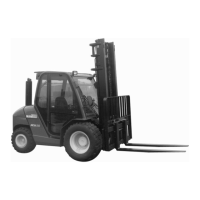
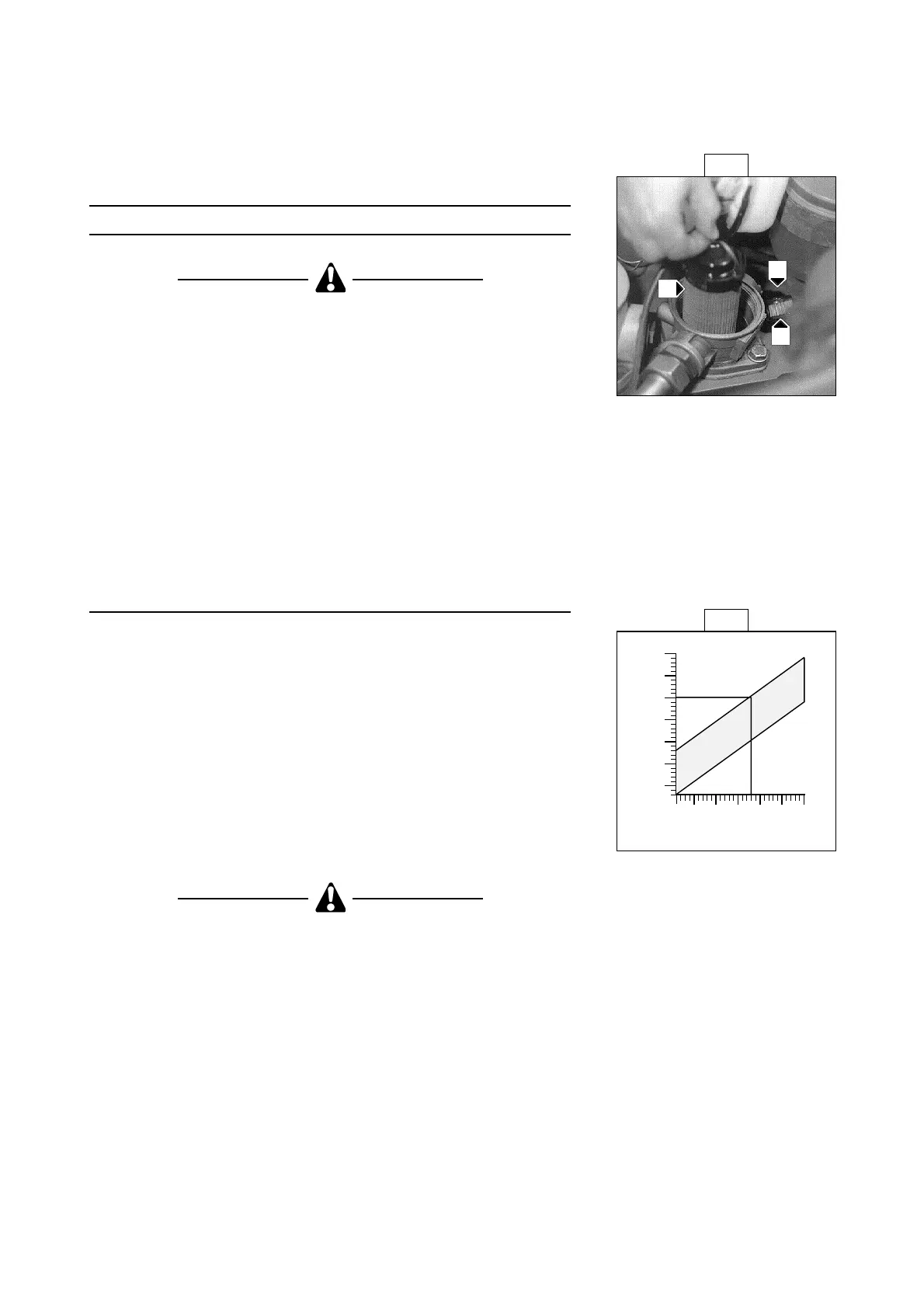